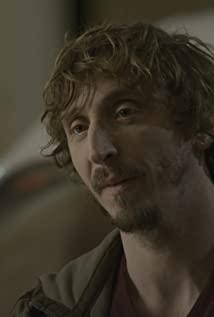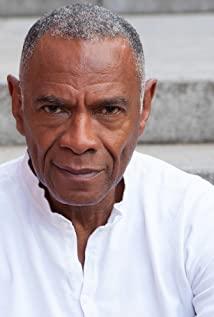"Obvious", the word "obvious" is actually the soul of the movie "The Hunger Platform". The more "obvious" it is, the easier it is to be "ignorable", which means that people give up details, give up questioning, give up thinking, give up questioning, and accept an existing order in front of them.
Magicians always use the "obviousness" to attract the audience, and then use the audience's "blindness" to make a difference. This paradoxical phenomenon occurs not only within the movie, but also in the metaphorical reality of the movie.
I just watched this movie yesterday, and I didn't understand it the first time, so I read dozens of movie reviews. Paradoxically to me, one of the most "obvious" problems with the film has been "ignored":
How did Mihalu manage to survive at the lower level every month?
I'll discuss this first, and then a few other topics:
- The "obvious" nature
- The essence of vertical self-management centers
- class society metaphors
- Failed Salvation Strategies
- How to achieve true win-win in Hole
- Who is the "message" at the end to?
Let's talk about the first question:
How did Mihalu manage to survive at the lower level every month?
Miharu, an Asian woman, descends from a high level to a low level at the beginning of each month, and even exceeds 200 floors. How did she survive at the lower levels and still maintain her physical strength?
Miharu (Miharu? He looks Southeast Asian in appearance? He loves bibimbap, Korean? His name is Japanese?) If he only specializes in cannibalism, he doesn't necessarily have to go that deep. At most, she only carried a small bag of flesh and blood with her every time.
Before trying to answer this question, let's immerse ourselves in the setting of the movie and think about it. If we are in this deep pit ("the hole" in English, translated into "prison pit" seems inaccurate, adding additional meaning to mislead ), every month there is a reason (whether it's a 333-story kid or not) to descend to the depths, how to ensure survival.
The only winning strategy I can think of is to wake up at the level with food, and kill most of the people down one by one, so as to ensure that the food at the top cannot be eaten, and it will definitely drop to the bottom. But its premise is that the force value is 110, and it must be able to kill most people without mortally wounding itself.
Mihalu is obviously not such a person. She is scarred every time she fights, and she has never killed innocent people indiscriminately. Besides, when she went to the 171st floor to rescue the male protagonist, there was no food on the 171st floor. If she is really looking for her own child, even if she finds any level without food, she will not be able to live with her child.
Therefore, when Mihalu descends, two conditions must be met:
- Even if you are at the top, you must take huge risks to go to the lower level, not for self-interest or for fun
- There is a way to survive at the bottom
After thinking about it, the only possible explanation is that Miharu was really looking for a child (whether it was her child or not); and at the end of the movie the child (I'm not sure if it was a boy or girl, just long hair) lay on the platform Going up, all the way to level 0, is feasible.
It makes sense that children and other cutlery won't be shattered by the elevator's rapid ascent. The Authority created a platform that would automatically descend, but also created the risk that people could ride the platform back to the top. How to stop people from sneaking up on the platform? The answer is acceleration, and the platform will smash the obstacles in its way (a bloody picture reminds the consequences of the human body being hit by the platform).
This is why the platform has reached the bottom 333 floors (6 meters on the first floor, the depth of the hole is probably 3 kilometers), and it will continue to descend for a long time to the end. The distance from the 333rd floor to the bottom is used by the platform to accelerate, and people who jumped from the top to commit suicide will not fill the 333rd floor.
In the same way, there should be a long distance between layers 0 and 1 to slow down. Otherwise, the platform will rise rapidly like a cannonball, hitting the top barrier, and there will be loud noises, vibrations and debris. However, every time it does not, it means that the platform has a way to slow down, or there are other black technologies.
Based on these inferences, Mihalu only needs to find a way to go down to the bottom with the platform, so that he can go to level 0 without others being aware of it, and thus have a chance to survive. Apart from this, there is no reasonable explanation, and it can only go to the protagonist's fantasy.
Of the five months that appear in the movie, only the fourth month (202nd floor) where the protagonist is in a trance, Miharu doesn't appear, and she drops every time. She may reach the bottom floor every time, and then take the child back to the 0th floor through the platform.
This kind of inference is not a bright ending, but is as dark as the "frozen milk theory" (frozen milk is sent, but people on the 0th floor think that no one eats it because it has hair).
It is very likely that Mihalu reached the 0th floor every month, but was never sent down that month, because being sent down was equivalent to telling everyone that there was a way for the lower floors to reach the upper floors. And then The Hole's system was really broken, because everyone would flock to the bottom. But after every month, Miharu was sent back to a certain floor. The so-called "message" sent to floor 0 was the same as the frozen milk with hair, and it was useless.
The "obvious" nature
In the film, the male protagonist repeatedly asks common-sense questions and makes normal behaviors (such as shouting to people above and below). But the old grandfather (Trimagasi) with the enhanced katana replied to him with the mantra "obvious".
The same is true for our audience. At the beginning, we entered the movie with suspense. In the end, like the grandfather and the hero, we forgot our doubts. Everything seemed "obvious" and "speaking exhausting".
This is the standard procedure for humans to accept an external order. When people ask questions and questions, it also heralds a desire to change the order. And when people "once accept this setting", they will gradually be assimilated by the order, and feel that everything is "obvious", and even the "inner resentment" is gone, just like a clean snail.
When the protagonist is assimilated by The Hole, our audience is also being assimilated by the film, seemingly forgetting the initial question.
There is a monologue at the beginning of the movie, there are only three kinds of people in this world, "those at the top", "those at the bottom", and those who fall.
There are three kinds of people in the third kind of people:
- give up hope
- Miharu is so self-sufficient
- Male protagonist and black friend Baharat, trying to change
On the contrary, in the system of The Hole, the upper-class and lower-class people who stay in place have the same fate. Since there is no way to climb up, if there is a solution, the only solution is to go down.
The essence of vertical self-management centers
What is the biggest difference between a vertical self-management center and other "self-management centers"? The answer is "obvious", it is "vertical".
The Hole has two crucial settings:
- People from the lower level cannot go to the upper level, and if they go down, they cannot get up [Network] Trickle-down effect ;
- The upper class has absolute distribution power over food
- Each layer can only communicate with adjacent layers
This is the most essential difference between it and other "self-management centers", such as prisons. In such a system:
People at the top dominate everything, people at the bottom have no ability to change, and when their status declines, they also lose the ability to change.
Such a system led to what some great philosopher called 一切人反对一切人war. In the words of the Chinese sages, it is 枕人头,食人肉,菹人肝,饮人血,甘之于刍豢.
class society metaphors
Most viewers are aware of the Hole system's metaphor for class society. But this is not an accurate metaphor for the real world, because there is still class flow in the real human society, and there is no absolute verticality; more importantly, the people in the Hole are not productive, only the issue of distribution is left.
From this perspective, The Hole is a bit like Liu Cixin's "Supporting Human Beings", which is a metaphor for the future.
The metaphor is the development trend of capitalist class society, with more and more class differentiation, and the class gap is getting deeper and deeper. Similar to the main exposition of Parasite, the upper class and the lower class cannot understand each other. In this film, the class gap directly becomes a setting that cannot cross the room, and the focus is on the issue of food distribution.
Such an order partially exists in the real world, especially the residents of European and American countries are more familiar with it.
The Hole is a typical "Trickle-down effect" model, which is the most aggressive economic policy in developed capitalist countries.
These government officials and economists often advocate tax cuts for the rich and big companies to improve the fate of the poor, believing that in this way companies can make more money, develop better, employ more people, and these high-level workers will consume again. , allowing the economy to flow down the layers, thereby benefiting the poor.
Of course, the actual situation, to give an example: after many large enterprises get tax cuts and low-interest loans, they lend them to the government with high interest to build the infrastructure they need, and the government uses the high taxation of the working class to pay the interest. to these businesses. As a result, big companies make more money, while workers take on more debt.
Looking at the larger world, the world is also a trickle-down structure. First-class advanced capitalism monopolized the global energy, finance, and high-tech industries; and then relocated labor-intensive and highly polluting industries to allow Second World countries to develop; lower-end industries moved down layer by layer, Until the least developed countries without any resources and markets, rely on the love, clothing and food donated by the upper-level countries to survive.
In the real world we live in, the inequality of countries, nations and classes is increasing day by day. Humans are increasingly moving towards the system of VSC in movies.
But there have always been politicians and economists who advocated that the unequal dilemma generated by human society has a solution. They are just like the "managers" in the movie, arguing that VSCs (vertical self-management centers) make sense.
Even as suggested by the female interviewer in the movie, the Administration created The Hole system just to find a solution.
Although the internal details of the VCS in the film are not known to the public, its existence is to inform the world. Volunteers are even being recruited to come to this place to participate in social experiments.
The staff here seem to think that the VCS is waiting for people to find a way to "eventually" move towards "spontaneous union"; or to lead by a Messiah All move towards unity.
If unity is realized, we can also assume that it will be promoted as a solution to the real society in the movie, and solve the problem of mutual hatred and inability to unite in a class society.
This is the most concerned issue of the film "The Hunger Platform". It is not just a metaphor for class society. The most important thing is to metaphorize the "managers" who said "there is a solution" and whether there is a solution.
Just as the Authority created The Hole for Solver, the film's creators made "The Hunger Platform" for Solver.
Failed Salvation Strategies
The system in The Hole is very similar to the real world, and the division of classes leads to unfair distribution of resources, resulting in serious inequality. People at the bottom go through hell every day. The question is, "what to do"?
The whole movie "Hunger Platform" is to put the "what to do" of various people in front of us.
The most famous hypothesis surrounding this question is the "invisible hand," the so-called free market mechanism that automatically adjusts the distribution function to the benefit of all. But the market pantheon assumes a "rational person" for all participants. The introduction of game theory, the Prisoner's Dilemma and a series of examples have used mathematical methods to prove that as long as there is a certain proportion of irrational people, the "invisible hand" cannot take effect.
The grandfather of "The Hunger Platform" is a game-theoretic rebuttal. He's a liberal, selfish guy, but just selfish, not a bad guy. When he eats well, he urinates on the next floor, and when he has a bad time, he calls the upper floor an asshole. Such people destroy the spontaneous unity of the system, and soon teach more people to be selfish, and the system does not move toward "spontaneous" union, but "spontaneously" toward non-cooperation.
The male protagonist first advocated the method of communication from top to bottom, but was immediately questioned by the old man, "Are you a communist?" The male protagonist immediately fell silent. In the world of Hunger Station, as in real-world capitalist countries, "communism" is the most politically incorrect ban.
But I want to point out that the male protagonist's cooperative distribution strategy is not "communism" at all. I'm sorry to see almost no review mentioning this. "Communism" advocates a "relationship of production" rather than a "relationship of distribution". To advocate equality in distribution without touching the capitalist order itself, this is a "democratic socialist".
For example, Sanders, the grandfather who is now running for president in the United States. He advocates for universal health care in the United States, free education, a higher minimum wage, and taxes on billionaires and syndicates — but never mentions changes in production relations.
'The Hunger Station' Film Predicts Sanders' Results: Are You a Communist? The people above will not listen to the communists.
When the female interviewer came into The Hole, she did the same thing as the male lead at first, persuasion. This strategy emerged as an idealist, just like an international NGO, a social work system, giving idealists in the upper class a platform to change the order by persuading and helping.
Persuasion results in failure and without binding. For this reason, the male protagonist turned into a "shit messiah" and threatened with shit, which had a certain shocking effect on the lower layer. It seems that some public welfare international organizations have publicly criticized the dictators and corrupt officials of the third world countries and threatened to cancel the aid.
Such a threat is effective, but the effect is that it exists in one or two layers, and the overall system is not shaken. Because idealists have no way to wake up the lower layers, and there is no way to "you can't poop to the higher layers above your head".
Crucially, the abilities of idealists depend on their class status. When the time comes, the gears of fate are reset, the idealists lose their superiority, and their words no longer matter. When I was at a lower level, in order to avoid cannibalism and carry out my goodwill, I had to commit suicide and feed people with meat as the only way out.
The trickle-down effect, spontaneous market mechanisms, democratic socialism, idealism have all failed. This time, the male protagonist who woke up on the sixth floor had a powerful friend. This friend is strong and kind-hearted, and is bent on climbing up by flattering the upper echelons. What he got was a piece of shit that was pulled on his face by the upper class. The study of success is also shattered.
The protagonist and the black friend join forces and make a bold move, they choose authoritarianism and go down layer by layer. Defend the distribution of food with force.
Because they try to monopolize the right to allocate resources all the time, they are in a game of mutual questioning with the people they want to help. They dare not give up force easily, and must beat non-cooperators to defend their position. It is difficult to define whether it is helping people or infringing people.
Further, authority is not omnipotent. At a certain level, if you encounter more fierce people (who can kill Mihalu and have extremely high combat power) challenge, if they are injured, the authority will be greatly reduced and replaced at any time. Just like those so-called "strongman leaders" who contributed to the country's economic growth, but were accused of being dictatorial, and were eventually shot and overthrown by subordinates who found a reason to kill them.
The most crucial point is that the rank of strongman leader is "declining", and as long as he is descending, he must lose his long-term authority and be replaced by a new upper class. Their actions are one-off, and they cannot awaken the unity of the masses. What's the point?
The wise man of more than ten layers gave the two protagonists a meaning. This meaning is to keep a symbol, a Message. This Message can be Italian frozen milk or a little girl. They hope to use this message to move the people at the top, even if they can't move the real ruler, they hope to move the staff who govern for the ruler.
So the two gave their names and sent the Message before dying. Has this move to move God succeeded?
We already know that, according to the ending of frozen milk, the administrators on the 0th floor cannot understand the information at the bottom. They can only use their own stratum experience, guessing that no one eats frozen milk because it has a hair (frozen milk with hair, and The frozen milk delivered is exactly the same).
According to the ending of sending a child, Miharu has successfully climbed to the top countless times, but every time he is sent back, he has to risk his life to go down again every time.
Either way, it's a failure.
In my opinion, the whole play has tried all kinds of statements in the real world, and none of them have been successful.
The only thing that has a slight effect is the suicide interviewer, and she corresponds to the road of religious redemption. Introduced in the protagonist's fantasy are the words of the biblical Jesus:
你们若不吃人子的肉,不喝人子的血,就没有生命在你们里面。……我的肉真是可吃的,我的血真是可喝的。In mythology, Jesus atoned for the sins of mankind with his own sacrifice, so Christians derived the sacrament ceremony on this basis. In the movie, the female interviewer used her own flesh and blood to help the hero atone for his sins. Let the male protagonist not fall into the state of the old grandfather, but try the final road of redemption with his life.
Such self-sacrifice, even if it did not use his own flesh and blood to make the people at the end of the car give up cannibalism and unite like in "Snowpiercer", but at least two or three people were changed. Perhaps this is also the attitude the director wants to express.
How to achieve true win-win in Hole
So, how to achieve a real win-win situation in Hole? Do I have my own way?
If someone asks me this question, all I can say is that the whole movie is worth watching the first time, and I need to watch it a second time.
All attempts to change the Hole order in the movie are human attempts. No matter the starting point is rationality, idealism, religion, power, self-sacrifice... All are to let people unite through ideas, and create an order in which poverty is equal but no one falls into the tragedy of cannibalism.
These Ideas can be collectively referred to as Idealism, but all attempts in the film have failed.
The real answer is the "obvious", the "elephant in the room", which is ignored.
The answer is "no solution".
Because the root of the problem is never that the human nature of the participants is not great enough, but the rules themselves, the narrow six-meter-high room in each shot, the three-hundred-story deep pit that is several kilometers long.
All strategies and plans of all participants have an "obvious" common premise, which is to try to achieve a win-win situation spiritually without changing the material reality of "vertical" class differentiation.
Then we can see through the eyes of the film, the novel by Don Quixote. All that cannot materially change the existence of the pit, but try to win spiritually, are "Don Quixote"-style actions. Full of heroism and ultimately nothing.
In fact, the Hole solution itself is a scam for managers. The administrators created the Hole, a social experiment, to attract volunteers and recruit criminals, and to keep society eagerly awaiting the outcome. The chefs on the 0th floor carefully crafted the food, and the interviewer has recruited people for 25 years, all of which are maintaining the operation of the system.
They all thought that the system could find a solution, that the food was enough to distribute to 400 people on 200 floors, and that as long as everyone moved towards spontaneous unity, they would be saved. However, there are more than 200 floors in Hole, there are 333 floors, and the number of 666 symbolizes hell. The food given by the manager is not enough no matter how it is distributed, and the spontaneous union will inevitably collapse due to the limited resources. The premise of win-win in game theory does not exist, which itself is zero-sum, and a war between everyone and everyone is bound to occur.
The administrators are not hoping to find the optimal solution through this social experiment, they make sure that the social experiment will never come up with a solution, but it will work for decades. In this way, more people like chefs and interviewers, and more volunteers like protagonists can spend their energy in this project. Let the real-world Hole work the same way.
And no one thinks about how to physically break this hell
When everyone tacitly accepts that Hole's architecture is the most "obvious" existence, everyone turns a blind eye to the real possibility of change.
It is not the human heart that should be changed, but the material basis of the system. We should level the deep vertical well and eliminate the existence of class itself; let everyone be in the same space where they can interact, put food in front of everyone at the same time, and let everyone participate in games and negotiations. Sooner or later order will be established.
There is no answer to the question, because the question itself is the answer.
Who is the "message" at the end to?
I think the director of the film wanted to understand these truths. That's why this movie was made and the novel "Don Quixote" appeared.
However, at the end of "Snowpiercer", the train representing the cyclical law was blown up, because only by blowing up the material train and destroying the order itself can humanity be liberated.
The protagonist of "The Hunger Platform" did not destroy the train like the protagonist of "Snowpiercer", but sent the child out as a message, and the movie came to an abrupt end.
The film's confusing ending leads to the persuasive frozen milk saying that children are just imagining. The frozen milk that was actually delivered made the chefs on the 0th floor mistakenly thought that they had lost their hair and no one would eat them.
According to what I said earlier, the person sent to the top floor can survive, so the child's fate is the same as Mihalu, and it is likely to be sent back next month. But as the wise man said, there is still a glimmer of hope in this message, which is to let the staff on the 0th floor find out the truth. The Administration's claim that it does not accept children under the age of 16 is a lie, so that more "outsiders" will question the Administration. the behavior of. So the meaning of this child is a bit like the ending of the movie "Moon".
But I'm still not optimistic. Why is the level where the chef is located, called level 0, not the ground?
Because these "chefs", or "professional managers" under the management, are imprisoned in this Hole like other experimenters. They are ecologically different from the test subjects on each floor, but not in status. They are all slaves. Once you rebel from the 0th floor, you may not have the fate of falling to the 333rd floor, just like in "Cube3" (different dimension killing array 3).
But it doesn't matter. If the director really wants to talk about the ending of the child, he can shoot a little more ending.
The reason why the movie ends the moment the Message is delivered is because the Message has already been delivered. The delivery object of the Message is us, the audience.
The whole movie is a message, a symbol, just like the little girl in the play, frozen milk.
The moviegoers are the real 0-tier workers, the only ones the wise man can hope for.
You taste, you taste carefully.
Finally, the question is, are you angry about the hair on the frozen milk?
View more about The Platform reviews










